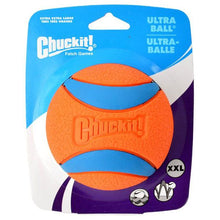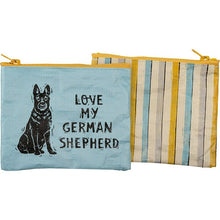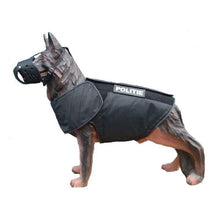7 Easy Training Tips For Loose Leash Walking

It’s so great to be able to take your dog for a walk without being pulled down the street. Not only does it make walks much more pleasant, it’s also safer for you and your dog. By teaching your dog to walk on a loose leash, you’ll amp up your walking game, and enjoy many more miles with your pet.
To train your dog to walk on a loose leash you’ll need a leash (not a retractable leash), collar, treats, and a clicker. You can use a harness if your dog is already familiar with one but keep in mind; some dogs will pull more while wearing one.
When teaching your dog to heel on a loose leash, you’ll also need patience and plenty of practice. But the reward for all your hard work will be a dog that you can take anywhere, in any situation, without your arm being yanked off.
1. Just stop walking
One of the easiest ways to teach your dog not to tug on their leash is to stop walking when the dog pulls. If you allow your dog to pull you, the dog learns that when they pull, they get to go where they want. They’re in the driver’s seat.
If you plant your feet and refuse to budge, your dog will soon learn that pulling gets them nowhere, literally. This simple step takes patience and practice and is often overlooked because it can be frustrating, but it doesn’t have to be.
Start training expecting to go nowhere on your first walks and remember that this is simply foundational training. The best walks are ahead. Incorporate the following tips and you’ll be soon strolling down the street.
2. Use training treats
Using treats is a great lure for teaching your dog to walk on a loose leash. Simply fill your pocket with treats before you snap on the leash. As you begin to walk, hold a treat in your left hand (assuming you’re training your dog to heel on the left side) and take a step.
Tell your dog to heel, and then take another step or two. Your dog should be following at your side and looking at you in anticipation of getting that treat. If your dog steps with you, give lots of praise, and the treat. If your dog pulls, stop moving and lure the dog back into position with the treat but don’t feed the treat unless the dog walks next to you.
Keep practicing taking steps using the treat and praise as the lure until your dog grasps what a good doggo they are and how much fun it is to walk on a loose leash. When they do, start slowly backing off on the treats over time, until they are no longer needed. Never stop the praise.
3. A clicker can help
The clicker is a great tool to mark desired behavior. Soon the dog learns that the click means reward, they’ve done something right. It makes teaching dogs to do almost anything much easier. Done right, it’s a tool that is also fun for dogs.
To incorporate the clicker, use your treats just as you would with the treat lure method but this time when your dog steps with you, click as you say “yes!” in an excited voice and feed the yummy treat.
If your dog is already familiar with a clicker, the training will go much faster but most dogs pick it up very fast. As you practice go longer distances with the occasional click and “yes” until you no longer need treats and your dog is walking by your side.
4. Talk to your dog
When you’re practicing the loose leash heel, talk to your dog to help distract it from distractions. Your dog will love all the attention and also be learning to look to you for guidance so it’s a double win. This method is super helpful if your pet is still learning and you’ve forgotten your treats, clicker, or if the dog is super distracted by something.
This method is also a great to use in transition from training with treats to eliminating the need for treats. You can also easily incorporate additional commands such as sit and down, when you get to this stage of the loose leash walk.
5. Walk inside your house
Teaching your dog to walk by your side while inside your house is a great strategy. You can practice it in any weather and it’s always convenient. Walking inside also has the added bonus of few distractions.
All you need to do to walk your dog inside is snap on their leash and give the heel command and use your treats. Practice walking around the house until your dog no longer pulls on the leash. Once your dog has mastered the loose leash walk inside your house, you can begin to make it more challenging.
6. Walk your yard
Although your dog is familiar with their own yard, there are more distractions than inside your house. You have less control over the environment and there are interesting scents floating in the air and on the ground.
Walking in your yard is more challenging and will prepare your dog for walks in public places. Practice walking in your front and backyard until your dog walks on a loose leash before moving on to new locations.
At this stage, you’ll probably find you need lots of treats and praise. It also helps to put your dog’s toys away, as they first practice but as they learn, the toys can help with distraction training.
7. Go on an outing
Once your dog is walking on a loose leash in your home and yard, start taking walks around your block or other familiar places. Bring your clicker and treats, but make sure they are extra drool worthy at this point.
As your dog masters the loose leash walk, keep practicing and adding new exciting places like parks and places where there are other people, dogs, and lots of distractions. Training and praise never ends so be sure to reward your dog for doing their job right.
These simple loose leash walking tips with help you train your dog to walk anywhere without causing you pain. Please share them with your family and friends.























